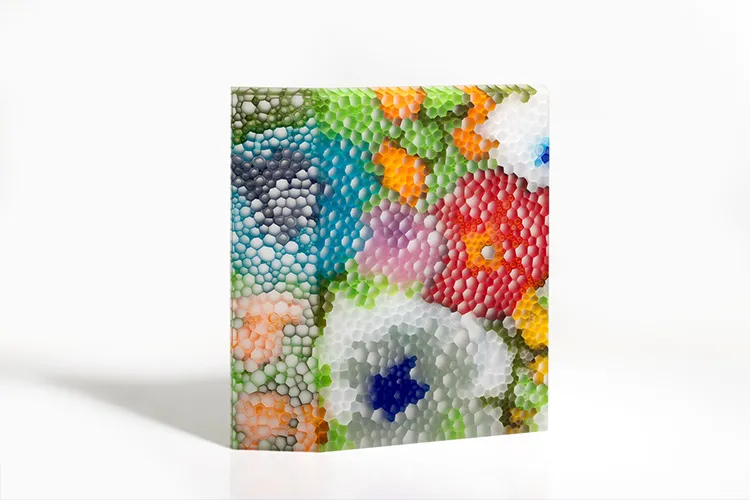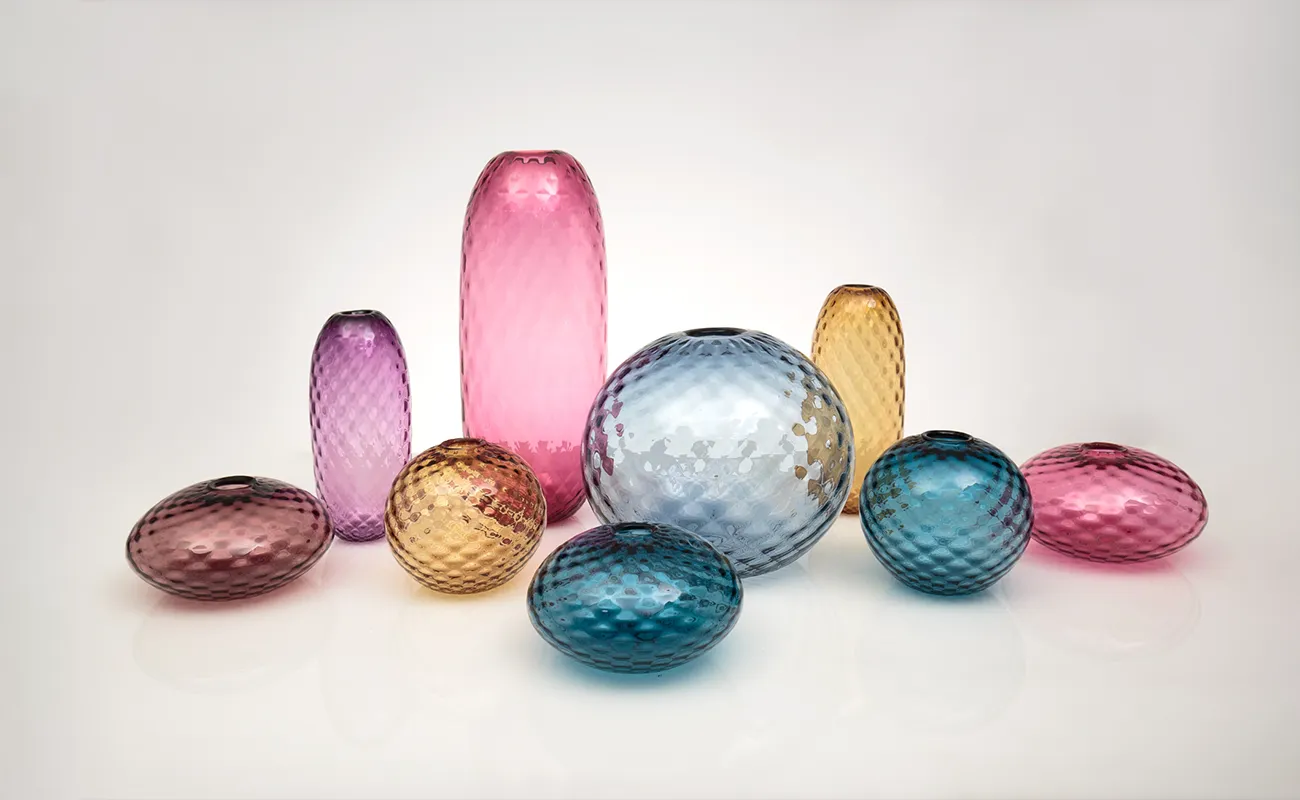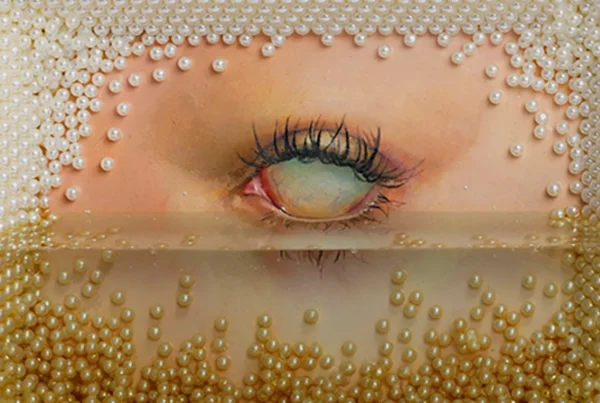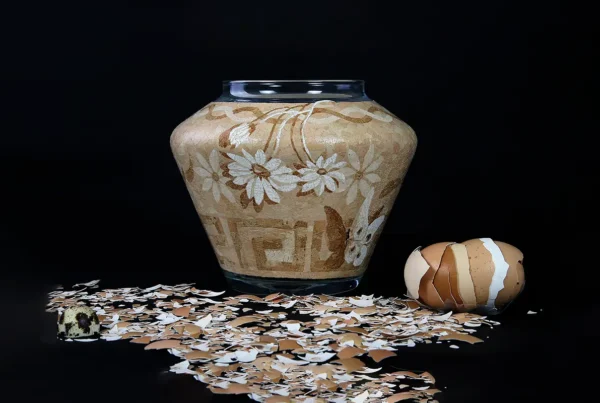A Fusion of Tradition and Modernity
Robert Comploj, born in Tyrol in 1982, stands at the forefront of a rare and historic craft: glassblowing. What makes Comploj’s work particularly compelling is how he fuses the old-world Venetian glassblowing techniques with modern Scandinavian design sensibilities, producing a unique symbiosis of craftsmanship and contemporary artistry. His creations, often composed in bold, striking colors and sleek forms, are a testament to his mastery of both tradition and innovation. From his Vienna-based studio, Glashütte Comploj, he brings glass art not only to collectors but also to a wider audience, making it an accessible experience for anyone who walks through his doors.
At Glashütte Comploj, visitors can immerse themselves in the process of glassmaking, witnessing firsthand the delicate and intricate methods of shaping molten glass into exquisite art pieces. His workshop is not only a place of creation but also of education, where students and enthusiasts can learn the complexities of this ancient craft. Comploj’s passion for reviving glassblowing in Austria, a country that once saw the decline of this art form, is a driving force behind his studio’s philosophy. His efforts have been recognized internationally, with his works showcased in prestigious galleries from New York to London and Berlin.
Comploj’s dedication to the craft goes beyond aesthetic appeal. His works are deeply influenced by nature and the evolving trends of modern society, reflecting a bridge between the past and the present. By breathing new life into an almost forgotten tradition, Robert Comploj has made glassblowing relevant once again, ensuring its survival in a world increasingly focused on speed and mass production.
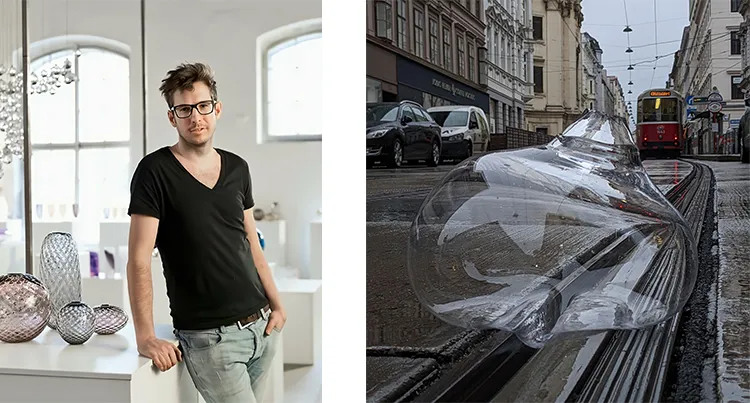
Robert Comploj: A Journey Forged in Fire
Robert Comploj’s path to becoming an internationally renowned glassblower began far from the Austrian capital where he now works. His journey took him across Europe and beyond, in search of the masters of the craft who could teach him the secrets of glassmaking. His formative years were spent in Murano, Italy, the historical epicenter of Venetian glassblowing, where he learned from Elio Quarisa, one of the most celebrated glass masters. Later, he continued his education at The Studio of Corning Museum of Glass in New York, under the guidance of experts like Eric Meek and Bill Gudenrath.
These experiences profoundly shaped Comploj’s artistic vision. Exposure to various techniques from Italy, Denmark, and the UK broadened his perspective, allowing him to explore the infinite possibilities of glass as a material. Whether experimenting with form, color, or texture, his style is ever-evolving. Upon returning to Austria, he revolutionized the glassblowing scene by introducing new approaches and reinvigorating old ones, positioning himself as a leader in the craft.
In 2013, Comploj founded Glashütte Comploj in Vienna, where he not only produces his own creations but also collaborates with a team of skilled artisans to explore the boundaries of glass artistry. His work, which often merges art, design, and craftsmanship, has been sought after by collectors and artists alike, and his ability to adapt traditional techniques to modern aesthetics sets him apart in a field where innovation is often constrained by tradition.
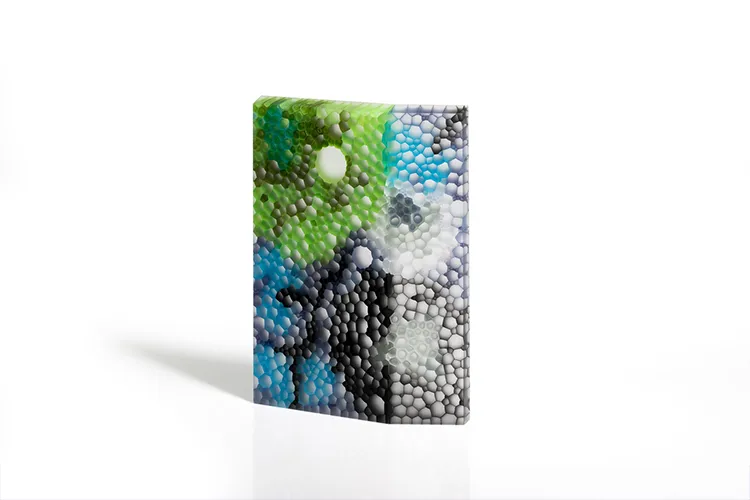
Shaped by the Elements: Nature’s Influence on Robert Comploj’s Craft
Nature is a powerful source of inspiration for Robert Comploj, and it is reflected in every piece he creates. His designs often evoke the fluidity and organic shapes found in the natural world, whether it be the gentle curves of flowing water or the transient forms of clouds in the sky. He draws heavily on the changing seasons, with their varying colors and moods, to inform the tones and patterns of his glass objects. This connection to nature allows Comploj to instill a sense of life and movement into a material that, when cooled, becomes rigid and still.
Comploj’s pieces possess a dynamic quality that mirrors the unpredictability of natural forces. The glass he works with is molten, almost liquid, and can be shaped into nearly any form—a characteristic he likens to the elements of air and water. This malleability presents both a challenge and an opportunity, pushing him to test the boundaries of what is possible with glass. His works often exhibit a tension between fragility and strength, much like the elements they are inspired by.
His approach to glassmaking is deeply rooted in his Austrian heritage but is equally influenced by his global experiences. The glassblower draws not only from nature but also from the cultural and social trends that shape modern art and design. Whether designing minimalist Scandinavian-inspired pieces or bold, experimental forms, Comploj’s ability to synthesize these influences speaks to his versatility as an artist. Each creation becomes a visual story, encapsulating the ever-changing relationship between man and nature.
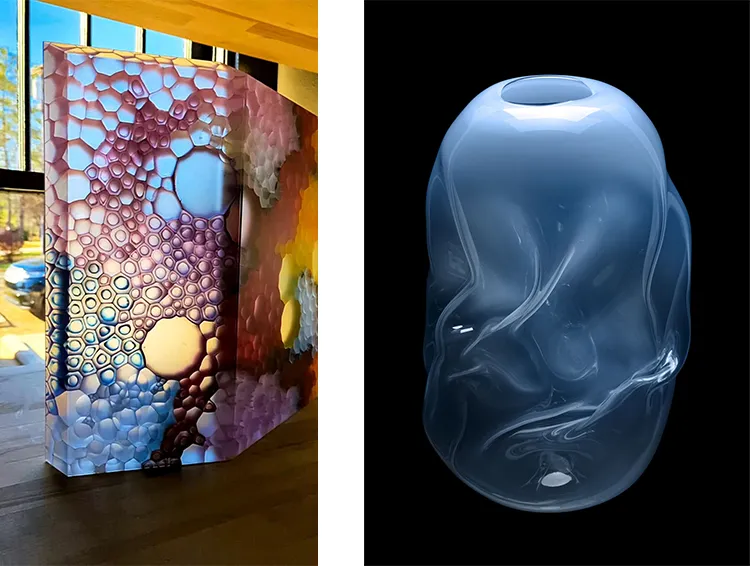
Robert Comploj: Preserving an Endangered Craft
As the world becomes more focused on speed and efficiency, crafts like glassblowing are becoming endangered. Robert Comploj is deeply aware of this and sees himself as both an artist and a guardian of an ancient tradition. In a world driven by mass production, his commitment to handcrafted, bespoke glass pieces stands in stark contrast to modern manufacturing methods. He believes that the time-intensive process of glassblowing offers something that cannot be replicated by machines—the human touch, the unpredictability, and the uniqueness of each piece.
Comploj’s efforts to preserve glassblowing extend beyond his own work. By opening his studio to the public, he invites others to not only witness the beauty of the craft but also to try their hand at it. Through his teaching, Comploj passes on his knowledge to a new generation of glassblowers, ensuring that the tradition remains alive. His team of artisans, both men and women, work collaboratively to push the boundaries of the craft, experimenting with new techniques while staying grounded in time-honored practices.
For Comploj, the future of glassblowing lies in its ability to evolve while maintaining its essence. He remains optimistic that with innovation, dedication, and a respect for tradition, glassblowing will not only survive but thrive. By constantly challenging the material and embracing creative risks, Robert Comploj is helping to secure the future of this ancient art form, making it relevant for generations to come.
